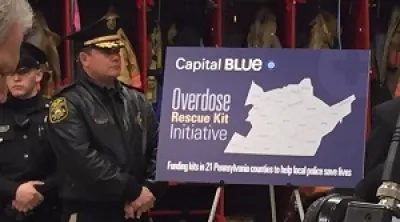Prescription drug abuse has quickly become an epidemic in the United States. These medications may seem harmless because they are technically “legal.” However, prescription pills are the cause of the majority of drug-related deaths and are highly addictive. In 2007, prescription drug overdose caused four times as many deaths as heroin overdose.
Like many states, Pennsylvania is battling prescription drug abuse problems within its communities. Since 2009, there have been more than 3,000 deaths in Pennsylvania due to drug overdose, according to the Pennsylvania Department of Drug and Alcohol Programs (DDAP). Capital BlueCross recognized this rapidly growing problem and began working with community partners to raise awareness, increase education and save lives.
In late 2014, Capital BlueCross announced that it would provide funding to enable every municipal police department and college security office in the areas it serves to purchase and carry naloxone. Naloxone is a prescription drug that can help save the life of a person who has overdosed on prescription painkillers or heroin. The nasal spray creates a window of opportunity for additional medical care to be administered.
In addition, Capital BlueCross provides funding for a program that raises awareness in schools about the risks of prescription drug and heroin abuse. The program reaches approximately 7,000 students in six school districts. Capital BlueCross also collaborates with WITF Smart Talk to sponsor a radio show called “How to Treat Addiction Successfully.” About 43,000 people across central Pennsylvania tune in each week.
The multifaceted approach of Capital BlueCross to decreasing drug abuse is an example of the Power of Blue—Blue Cross and Blue Shield Companies’ commitment to improving the health of the communities we serve. To learn more about how BCBS companies are putting the Power of Blue to work across the country, download the full Investing in America’s Health report or visit bcbs.com/investingincommunities.

